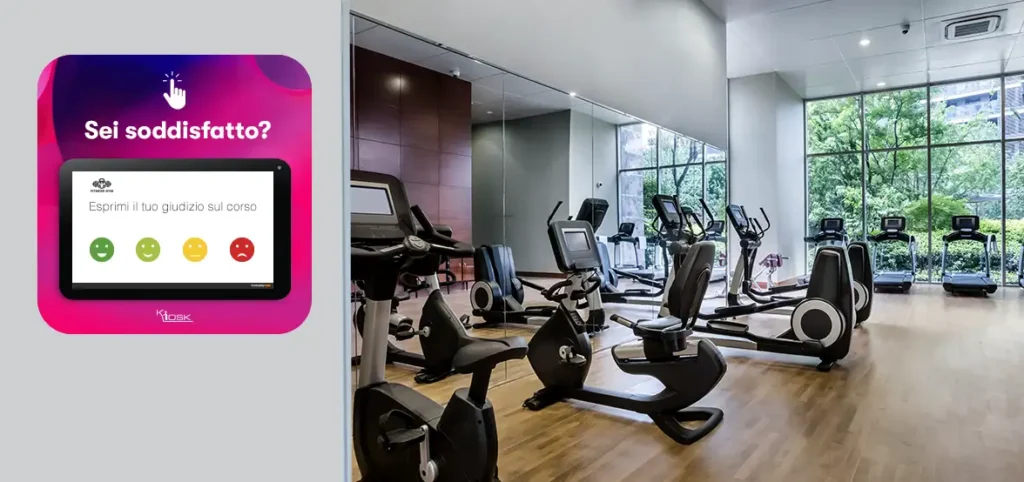Assessing customer satisfaction is crucial to maintaining strong relationships with your customers. Through the use of surveys and tools such as Customer Satisfaction Score (CSAT), Customer Effort Score (CES) and Net Promoter Score (NPS), you have the ability to monitor key indicators of customer satisfaction.
These include overall satisfaction, degree of appreciation for specific aspects, customer loyalty and propensity to make further purchases.
In a world where customer experience is at the center of every business strategy, understanding how to evaluate and improve satisfaction becomes an imperative. Through this article, we will explore the different methodologies, metrics and tools used to measure satisfaction, highlighting the importance of listening to the voice of customers and providing tangible added value.
A journey into satisfaction analysis that will lead us to discover how organizations can transform feedback into concrete actions to build solid and lasting relationships with their customers.
Index
Why do companies need to measure customer satisfaction?
How can a company measure customer satisfaction?
How to set customer satisfaction goals?
How to make the most of customer feedback?
How to best leverage tools like CSAT, CES and NPS to measure customer satisfaction.
What are the differences between CSAT, CES and NPS systems?
When is it best to measure customer satisfaction?
What to do after measuring customer satisfaction?
Why do companies need to measure customer satisfaction?
Measuring customer satisfaction is a fundamental practice for many companies to understand customer perspectives, resolve problems, improve the overall experience and maintain a healthy and profitable relationship with customers.
Among the key reasons why companies should measure customer satisfaction we can mention:
- Feedback for improvement
Collecting feedback from customers provides valuable information on how to improve products, services and business processes. Companies can identify pain points, recurring problems or areas for improvement, allowing them to make targeted changes to better meet customer needs. - Customer loyalty
Satisfied customers are more likely to remain loyal to the company and continue to do business with it in the long term. Customer loyalty is essential to the financial stability and sustainable growth of a company. - Positive word of mouth
Satisfied customers tend to share their positive experiences with friends, family and colleagues. This form of word-of-mouth advertising can bring in new customers and help build a positive reputation for the company. - Reduction of the churn rate
Monitoring customer satisfaction helps identify warning signs that could indicate possible customer loss (churn). By addressing customer-reported issues early, companies can reduce churn rates and preserve the value of existing customers. - Increased customer value
Satisfied customers are more likely to make repeat purchases and purchase additional products or services. This contributes to an increase in customer value over time, positively impacting overall revenue. - Competitive differentiation
Offering a superior customer experience can differentiate a company from the competition. Customer satisfaction becomes a competitive advantage, especially in industries where products or services are similar between different companies. - Improved brand image
High customer satisfaction helps build a positive reputation for the brand. A positive brand image can attract new customers and improve the perception of the company in the market.
How can a company measure customer satisfaction?
There are several methodologies and tools that companies can use to measure customer satisfaction. Here are some of the most common techniques:
- Surveys and questionnaires
– Post-Purchase: After a customer has made a purchase or used a service, you can send satisfaction surveys via email or through the website.
– Periodicals: Regular surveys at pre-established intervals to collect ongoing feedback on customer experiences. - Telephone calls
Customer service representatives can contact customers to ask for feedback directly via phone calls. This approach can be particularly effective for complex situations or high-quality services. - Online reviews
Monitor reviews on review websites, social media, and other online platforms. Public reviews can provide an indication of customer satisfaction and influence brand reputation. - Focus group
Meetings with selected customer groups where they openly discuss their experience with the product or service. This method can provide qualitative insights. - Analyzing customer service feedback
Review support tickets and customer service interactions to identify patterns of customer issues or dissatisfaction. - Usage metrics
Monitor usage or behavioral metrics, such as frequency of product use, session duration, etc. These metrics can give an indication of overall satisfaction. - Customer Effort Score (CES)
Ask customers how difficult or easy it was to achieve a specific goal with your product or service. - Net Promoter Score (NPS)
Ask customers how likely they would be to recommend the product or service to others on a scale of 0 to 10. - Transactional data analysis
Analyze transaction data to identify purchasing patterns, returns, or other behaviors that may reflect customer satisfaction.
Companies often use a combination of these techniques to gain a comprehensive view of customer satisfaction. It’s important to tailor your approach based on your industry, product/service type, and specific customer relationship.
How to set customer satisfaction goals?
Setting customer satisfaction goals is a critical step in improving the overall customer experience and strengthening relationships. It’s like drawing a map to deliver an exceptional experience.
The objectives or goals of measuring customer satisfaction may vary from case to case, but almost always include:
- Identify areas that need improvement
- Examine the performance of specific functions
- Analyze the performance of offers and A/B tests
- Segment user experience stages and identify recurring issues
- Derive suggestions for proactive assistance strategies
Let’s see together how we could proceed.
First of all, immerse yourself in the world of your customers. Do market research and listen carefully to their feedback. Understanding their needs and expectations is essential to setting targeted goals.
Choose metrics that truly reflect customer satisfaction. You might opt for CSAT, CES, NPS, or other metrics specific to your industry. Make sure they are measurable and aligned with the company’s overall goals.
Now, let’s move on to the goals. Make sure they are SMART: Specific, Measurable, Actionable, Realistic and Time-bound. For example, rather than a generic “Improve customer satisfaction,” it may be more effective to set a goal such as “Increase NPS by 10% by the end of the next quarter.”
Involve your team. Listen to employee perspectives, especially those who have direct contact with customers. Make sure they understand the goals and the critical role they play in achieving them.
Think both short and long term. Short-term goals keep you motivated, but don’t forget to also consider long-term goals that contribute to the company’s strategic vision.
Align goals with business strategy. Ensure that improving customer satisfaction is an integral part of the company’s broader vision and goals.
Monitor constantly. Implement a continuous monitoring system to evaluate the progress of objectives over time. Adapt goals based on the changing needs of customers, the market, or the company itself.
And finally, celebrate successes and tackle challenges together with your team. Recognizing successes will help keep motivation high, while openly addressing challenges will provide valuable learning opportunities for continuous improvement. With these steps, you can chart a clear path to customer satisfaction.
Do you already know Kiosk Emoticon?
With the Kiosk Emoticon platform it is possible to carry out instant surveys and measure CSAT, CES and NPS.
Simplify the measurement and analysis of customer satisfaction with Kiosk Emoticon: the fast and precise way to obtain fundamental insights for your success.
How to make the most of customer feedback?
Making the most of customer feedback requires a strategic approach and ongoing commitment. By effectively integrating customer feedback into your daily operations and business decisions, you can create a virtuous cycle of improvement that contributes to customer satisfaction and sustainable business growth.
Imagine customer feedback as a valuable map that guides you through the territory of customer experiences. To make the most of it, you need to start with systematic feedback collection. Send clear and concise surveys, perhaps immediately after customers use your services or make a purchase. This will give you a detailed overview of their experiences.
Once you’ve collected the data, the real magic begins with in-depth analysis. Use analytics tools to spot trends and patterns. Involve your team at this stage: Employees can offer valuable perspectives based on their daily interaction with customers.
Don’t forget to prioritize. Focus on areas that have a significant impact on customer satisfaction or directly influence the customer journey through your company.
Communicating openly is key. Share the results of your analyzes with your team and explain the planned corrective actions. Maintain open communication with customers as well, showing transparency in the improvement process.
Now is the time to implement tangible improvements. Base corrective actions on the feedback received and make concrete changes. Let your customers know about changes you make in response to their feedback. This shows that you are listening and making real efforts to improve.
Foster a company culture that embraces feedback as an essential element for continuous improvement. Incentivize your employees to actively seek customer feedback and contribute ideas to improve processes and products.
Remember that the feedback and improvement cycle is never over. Constantly monitor customer satisfaction, adapt your strategies to changing needs, and continue to look for ways to make the customer experience better and better.
In this way, customer feedback becomes a dynamic guide to the company’s success, creating a virtuous cycle of continuous improvement that leads to customer satisfaction and long-term growth.
How to best leverage tools like CSAT, CES and NPS to measure customer satisfaction.
Once you have defined your goals and what you want to evaluate in your customer satisfaction analysis, it is often clear which methodology is best suited to your needs.
Among the main options we find:
Customer Satisfaction Survey (CSAT)
CSAT is a popular, straightforward approach to gathering specific customer opinions about specific experiences with your company.
However, it’s important to note that while it provides a broad picture of satisfaction, the CSAT may not be detailed enough to capture deeper nuances.
Customer Engagement Score (CES)
CES focuses on the effort customers have to put in to achieve their goals. Misura la facilità o la difficoltà nell’interazione con i tuoi servizi o prodotti.
It’s especially useful for evaluating specific aspects of the customer experience, highlighting areas where you could streamline processes.
Net Promoter Score (NPS)
NPS evaluates customers’ propensity to recommend your company to others. Classify customers into Promoters, Passives and Detractors.
It’s a powerful indicator of customer loyalty and can offer a clear perspective on your reputation and customer enthusiasm.
While CSAT is a useful tool for getting direct feedback on specific experiences, it can be beneficial to integrate it with CES and NPS to get a more complete and detailed view of your customer satisfaction.
The combination of these metrics provides a richer, more in-depth picture of your customer experience, helping you identify areas for improvement and maintain a high level of satisfaction.
What are the differences between CSAT, CES and NPS systems?
CSAT, CES, and NPS are three common metrics used to measure customer satisfaction, but they focus on different aspects of the customer experience.
- CSAT (Customer Satisfaction Score)
Objective: Measure the overall level of customer satisfaction with a specific transaction or interaction.
Methodology: Typically, customers are asked to rate their satisfaction on a numerical scale, such as 1 to 5 or 1 to 10.
Example question: “On a scale of 1 to 5, how satisfied are you with our service?” - CES (Customer Effort Score)
Goal: Measures how much effort a customer has to make to achieve a specific goal, such as solving a problem or completing a task.
Methodology: Clients are usually asked to rate the level of effort expended on a scale, for example from “very easy” to “very difficult”.
Example question: “How easy did you find it easy to solve your problem with our service?” - NPS (Net Promoter Score)
Objective: Measures customers’ willingness to recommend a product or service to others.
Methodology: Customers are rated on a scale of 0 to 10. Based on the answers, they are divided into Promoters (ratings 9-10), Passives (ratings 7-8), and Detractors (ratings 0-6). The NPS score is calculated by subtracting the percentage of Detractors from the percentage of Promoters.
Example question: “On a scale of 0 to 10, how likely would you be to recommend our product/service to a friend or colleague?”
In summary, while CSAT measures overall satisfaction, CES focuses on the effort required to achieve a goal and NPS evaluates the customer’s propensity to recommend the product or service. Organizations often use these metrics in combination to gain a more complete view of the customer experience.
When is it best to measure customer satisfaction?
One of the best times to measure customer satisfaction is shortly after the customer has had a meaningful experience with your product or service. This is because their experience is still fresh in your memory, and you are more likely to provide detailed and accurate feedback.
However, it is important to note that there is no universal answer for all cases. The “best time” can vary depending on the type of product or service offered and the lifecycle of the customer relationship. Here are some key points:
1. Immediately after the experience. If the customer interaction is brief or if the customer has just completed a significant action (e.g., made a purchase, received support, completed a form), it may be appropriate to ask for feedback immediately.
2. After an initial period of use. In some cases, it may be more effective to wait until the customer has had time to use the product or service for a certain period. For example, after a customer has used an application for a couple of weeks, they may have a more complete and informed view of their experience.
3. In conjunction with significant events. It may be useful to collect feedback in conjunction with significant events for the customer, such as the renewal of a subscription or the completion of a project.
The important thing is to choose a time that is relevant to the nature of the customer experience you want to evaluate and that allows the customer to express their opinions thoughtfully and accurately. Additionally, it is often beneficial to integrate customer satisfaction measurement into an ongoing approach, gathering feedback at various points throughout the customer relationship.
It should be kept in mind that measuring customer satisfaction is a continuous process and for this reason it can be carried out at different moments of the customer’s life cycle. Let’s look at some of the key moments when it might be appropriate to measure customer satisfaction:
1. After purchasing or using the product/service. It’s common to collect feedback immediately after a customer purchases a product or uses a service. It can be carried out through instant surveys such as Kiosk Emoticon
2. During the customer service interaction: If a customer turns to customer service for assistance or support, it is a good time to evaluate their satisfaction. This can be done through post-service surveys or by asking for feedback during the interaction.
3. After completion of a project or contract. If your business involves long-term projects or contracts, it is advisable to measure customer satisfaction at the end of each project or contract.
4. At regular intervals during the business relationship. Periodically, it is useful to measure customer satisfaction to evaluate customer perception over time. This can be done through periodic surveys or ongoing feedback.
5. Following significant changes. If there are significant changes in products, services or company policies, it is appropriate to measure customer satisfaction to understand how those changes are affecting customer perception.
6. Before the renewal of contracts or subscriptions. If your business involves contracts or subscriptions that expire, measuring customer satisfaction before renewal can be crucial to ensuring loyalty.
It is important to adapt the timing of measurement based on the nature of your business and customer relationship. The goal is to obtain meaningful feedback that can be used to continuously improve the customer experience and the quality of your products or services.
What to do after measuring customer satisfaction?
Once you have a picture of customer satisfaction, it’s time to take decisive action to improve the overall experience.
Let’s start with an in-depth analysis of the results you obtained. Explore the data you collect, spot patterns, and discover the areas where you shine and those that need a little more attention. Engage your team, especially those on the front lines with customers. Their perspectives can add valuable depth to understanding the big picture.
If critical feedback or reports of dissatisfaction arise, respond promptly. Critical issues require immediate action to restore customer trust. It shows that the voice of customers is heard and that the company is ready to make meaningful changes.
Now let’s move on to implementing concrete improvements. Use feedback as a guide to make tangible changes that address key issues raised by customers. Clearly communicate changes to customers and let them know that their feedback was crucial in shaping tangible improvements.
Maintain a continuous flow of feedback. Collect opinions and ratings regularly to maintain a clear picture of customer satisfaction over time. Adapt your strategies based on changing customer needs and expectations.
If feedback indicates staff can improve in customer interactions, provide targeted training. Make sure your team is aware of the crucial importance of customer satisfaction to the long-term success of the company.
Remember to recognize and reward your team for their contribution to improving customer satisfaction. Internal motivation plays a vital role in maintaining a high standard of customer service.
Communicate openly with customers about actions you take to improve their experience. Convey to them the company’s commitment to taking their feedback seriously and working tirelessly to provide better service.
Continue to monitor customer satisfaction metrics to evaluate the impact of your corrective actions. Make adjustments based on changes in market dynamics or evolving customer needs.
Finally, constantly look for new, innovative ways to exceed customer expectations. Be open to evolving and adapting, using feedback and market trends as a guide for continuous improvement. Approach customer satisfaction as a dynamic journey, aiming to build lasting relationships and ensure sustainable growth.
In conclusion
Customer satisfaction is not just a goal, but an ever-evolving journey to ensure extraordinary experiences. Gathering feedback, implementing improvements, and maintaining an open dialogue with customers are critical steps to the lasting success of any business.








